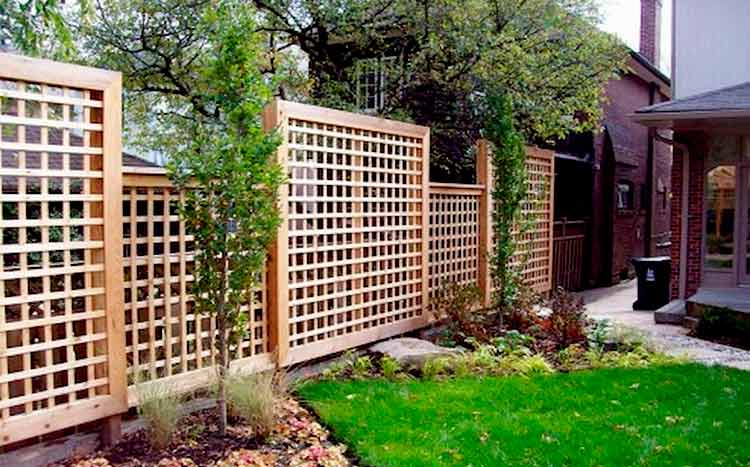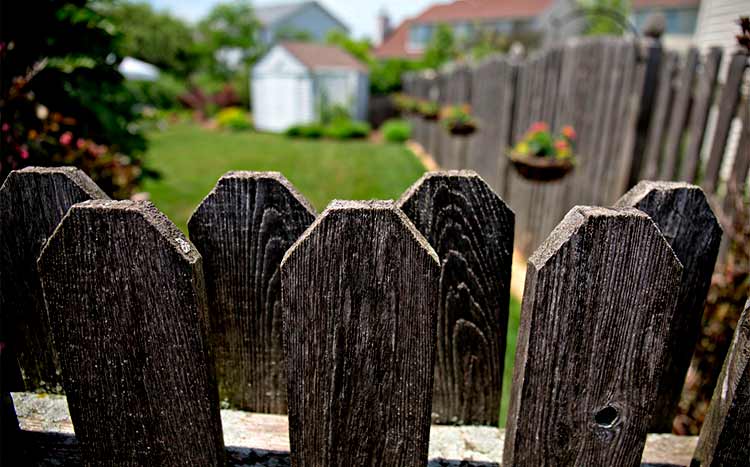Installing a barrier is an effective measure to safeguard your property and establish courteous borders with your neighbors. Regrettably, the issues of fences and property lines frequently result in significant disputes.
Regardless of your relationship with the neighbors, some of these issues can’t be resolved by mere talking. You’ll need to involve the Washington fence and property line laws to settle the difference amicably.

What we cover
ToggleDo I need a permit to build a fence in Washington?
Typically, you won’t need a permit if you’re constructing a fence 6 feet or lower in height. However, these regulations vary in each district and county. For instance;
- In Montgomery County, all fences over 4 feet require a permit
- In the city of Tacoma, fences over 7 feet need a permit
- In Snohomish, a permit is only required for fences over 8 feet
- In the DC area, a permit is needed for all new fences
Depending on the location of your property, you might also need a floodplain permit and even a zoning permit. Therefore, to be sure about your area code’s requirements, consult your planning department.
Can I replace an existing fence without a permit?
No. In almost every county and city code, you’ll need a permit to make any structural changes on an existing fence. This includes replacements or repairing more than 50% of that fence.
You may also need to get a permit in some counties if your fence repairs exceed more than $1,500 within a year.
How tall can a privacy fence be in Washington?
It depends on the location of your fence. In most residential, single-family zones, the fence heights are limited to 6 feet. On slightly sloping lands (depending on the area’s grading), the fence may be extended to 8 feet.
On the front yard fence, the limit stands at 3 feet, and 6 feet for the backyard fence. The height regulations for corner lots in each neighborhood is different.
Most areas cap the heights at 3.5 feet while others 4 feet. Check with your local planning office for help.
Who owns the fence on property lines in WA?
Generally, adjoining property owners sharing a fence on the property line are considered joint owners of the fence. They are each allowed to split the costs of the fence maintenance and repairs.
Under RCW 16.60.020, even if one neighbor built the fence but the other neighbor uses it such that it encloses their property, the building neighbor is legally allowed to seek reimbursement of up to half of the fence value.
How do you know where the property boundary is?
Your property’s boundary details are usually indicated on the deed of your property or on the plat map you received after a survey when purchasing the home.
If you don’t have any of these documents, you can check your county Assessor’s office to access your neighborhood’s plat map. For some counties, these maps may have already been uploaded online.
As a last resort, you can choose to hire a surveyor to re-indicate the boundaries of the property. This option may be quite costly, but it’s the best way to locate the precise legal boundaries of your property.
Can my neighbor build a fence on the property line?
Yes. While the Washington fence statutes allow the neighbor to build a fence on the property line, RCW 16.60.030 states that they must first notify you.
If the fence encloses your property in any way, they are allowed to seek reimbursement for up to half the costs from you. Nonetheless, for this rule to stand, the owner must construct a lawful fence as stated in RCW 16.60.010.
Can I put up a fence on my side of the property line?
Yes. Building a fence within your side of the property line is acceptable under the Washington fence laws. However, you’ll still need to observe the fence regulations in your local district regarding height and position setback.
It’s also worth noting that you can lose part of your land through acquiescence or adverse possession if you opt for this option.

Who pays for the fence between neighbors in Washington?
The law demands that both adjoining property owners must pay for a partition fence between their properties. Moreover, one owner can build the fence and seek compensation for one-half of the fence from the adjoining owner.
If one neighbor doesn’t want to be involved in the maintenance and responsibility for the fence, he/she can make an agreement with the neighbor. It should be signed, sealed, and recorded at the local clerk’s office.
If any neighbor refuses to make their contributions to the fence, you can sue them in a small claims court. Other conflicts such as trespassing can also be resolved by filing a suit in court in accordance with RCW 16.60.015.
Can my neighbor remove my fence?
Fence removal in Washington will depend on the circumstances surrounding that fence. If your fence lies on the neighbor’s property by mistake, RCW 16.60.055 allows you to access their property and remove the fence within three months from the time the boundary lines were determined.
If, after the three months, you still don’t move your fence, the neighbor will have the right to remove at least one-half of the fence.
The only exception to this removal is if your land still has growing crops. Even if the three months lapse, the neighbor will have to wait until you harvest to remove the fence.
What is a spite fence?
A spite fence refers to any fencing structure constructed with malicious intent to injure, annoy and harm an adjacent property owner. Such fences are usually illegal in nearly every state in the country.
In Washington, the law under RCW 7.40.030 allows the courts to issue an injunction to stop the erection of such a structure. If the fence is already up, the courts may order the owner to remove it.
Washington boundary fence laws at a glance
This table provides an overview of some of the state laws governing Washington’s fence laws and links to their original documents.
| Statues | Boundary Fence Rules | Spite Fences Rules |
|---|---|---|
| Boundary fences: Revised Code of Washington sections 16.60.020, 16.60.030, and 16.60.050 Spite fences: Revised Code of Washington section 7.40.030 | In most circumstances, a landowner who builds a boundary fence along a property line can seek reimbursement from the neighboring landowner for one-half the cost of the fence; A landowner building a boundary fence must first give notice to the adjoining landowner; Adjoining landowners are jointly responsible for maintaining boundary fences. | Washington statutes allow courts to enjoin the construction of any structure built maliciously and intended to spite, injure, or annoy an adjoining landowner. |
Keep in mind; These laws are bound to change with time depending on the new legislation, federal court decisions, and other initiatives. Use the information provided by HomeGardenGuides above as a guide and research the latest regulations in your municipality.
FAQ's
Who owns the fence between neighbors?
In most cases, adjoining landowners sharing the fence are recognized as joint owners. Additionally, if one owner constructed the fence, he/she may compel the other neighbor to reimburse them for one-half of the value of the fence.
What if a new fence is blocking my view?
Under the Washington fence laws, you can file a suit against any neighbor who builds a spite fence to annoy you. The court may order the neighbor to halt construction or completely remove it.
Can my neighbor hang things on my fence?
Your neighbor requires your permission to hang things on your fence. If they do it without your consent, you have the right to sue them for trespassing or criminal damage.
Can I paint my side of the fence?
It depends on your agreement with the neighbor. Legally, you can’t paint a neighbor’s fence just because you don’t like your side’s appeal.
If you don’t think your side of the neighbor’s fence is the pretty side, check to see if your HOA ordinances demand that they face the ‘good side’ of the fence on your side.
Otherwise, painting without permission may be treated as criminal damage.
Can I build a fence next to my neighbor’s fence?
Yes. The law is clear that property owners don’t have to share fences with their neighbors. Therefore, as long as you stick to your side of the property line, you can put up your fence next to the neighbor’s.
How close can you build to a boundary fence in WA?
The jurisdiction on the setback distance of the boundary fence varies in each county, city, or township. Some Homeowners Association may also have their own ordinances on how close you can build to the property line.
It’s, therefore, a good idea to always check with the HOA or a local fencing contractor before constructing.
Can my Neighbour paint my fence on his side?
The neighbor will first need your permission before proceeding with the painting.













